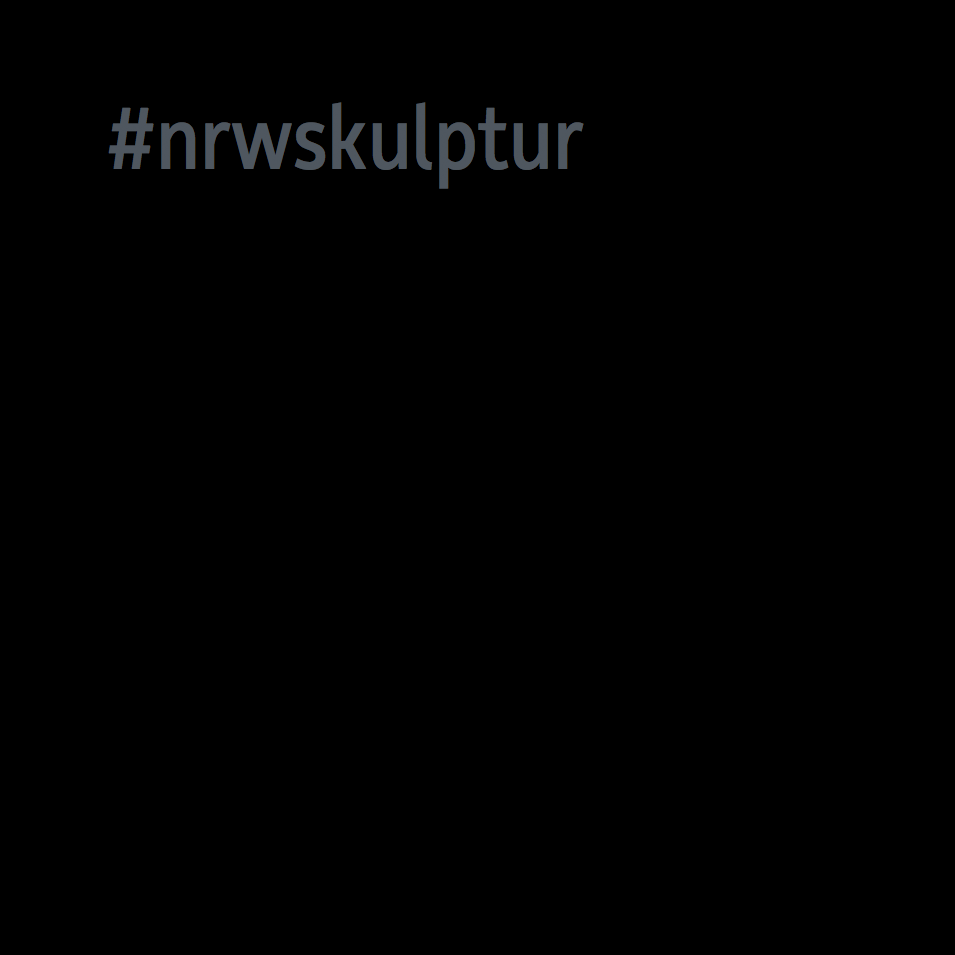Here Comes the Rain Again
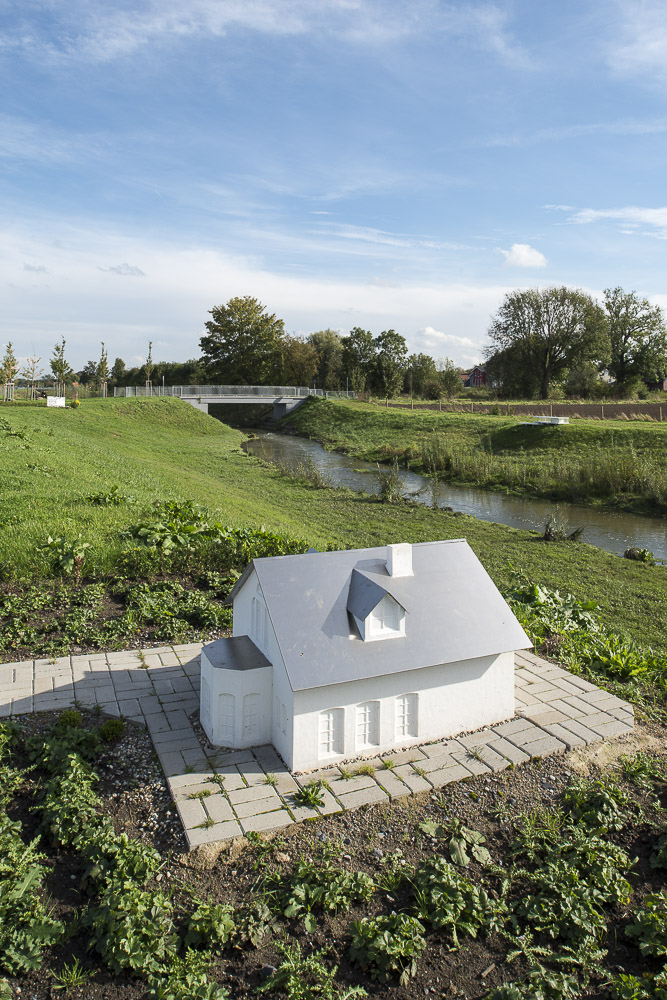
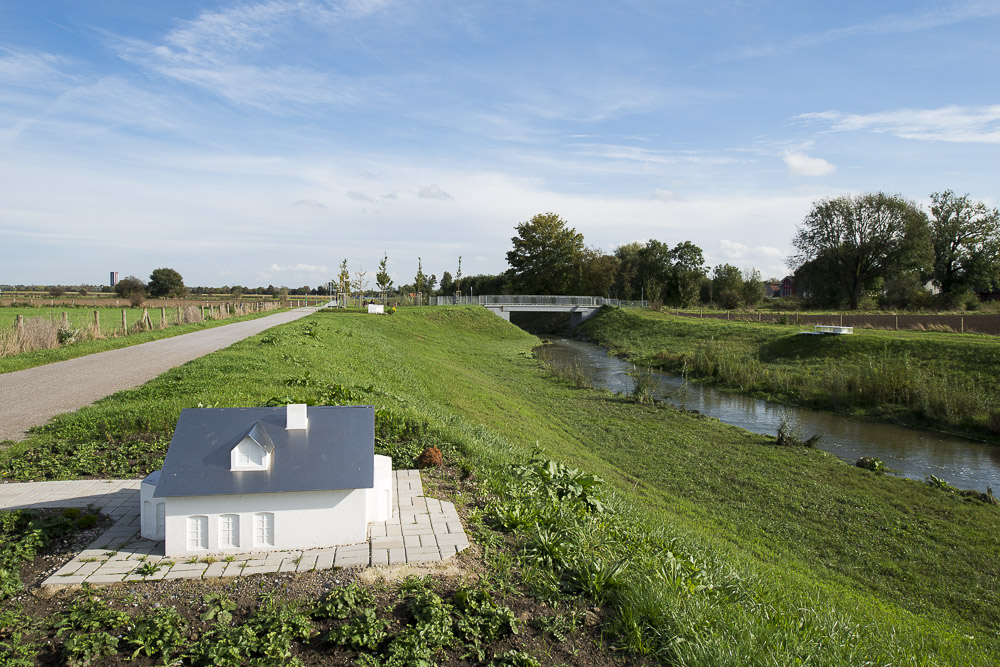
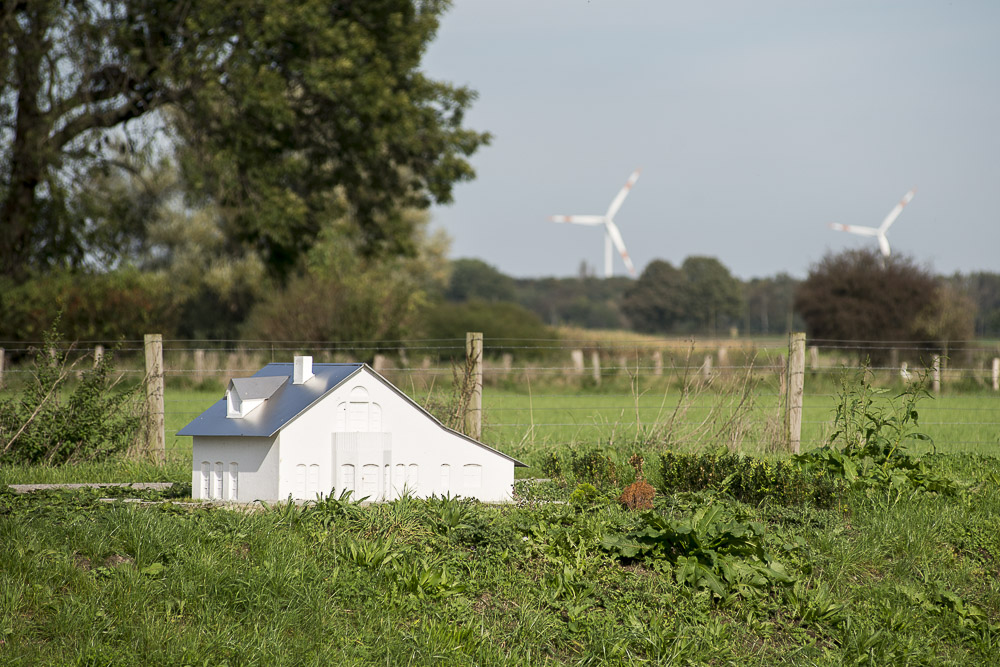
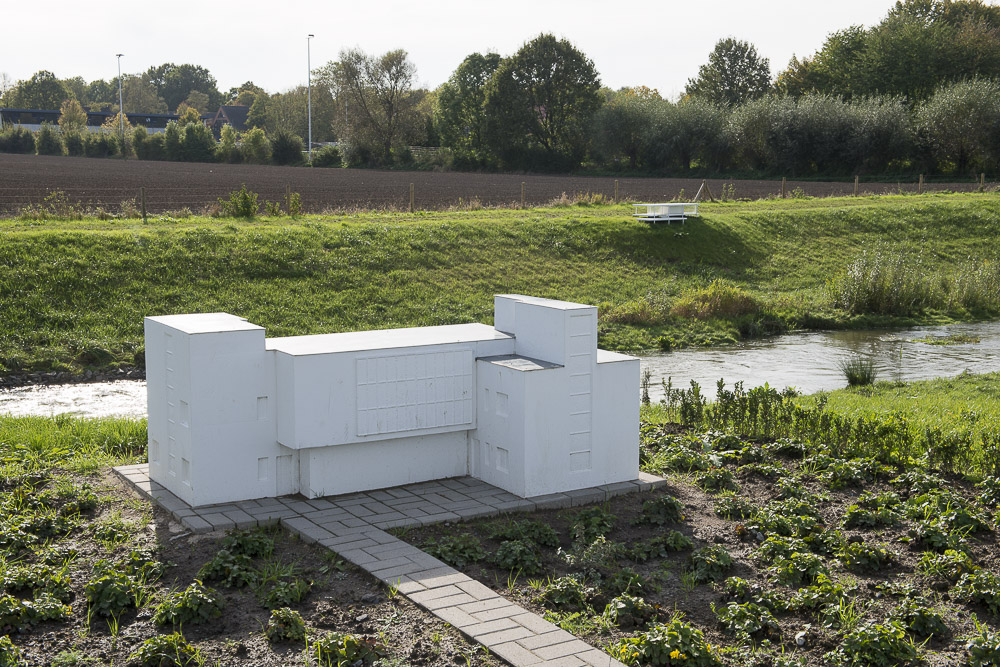
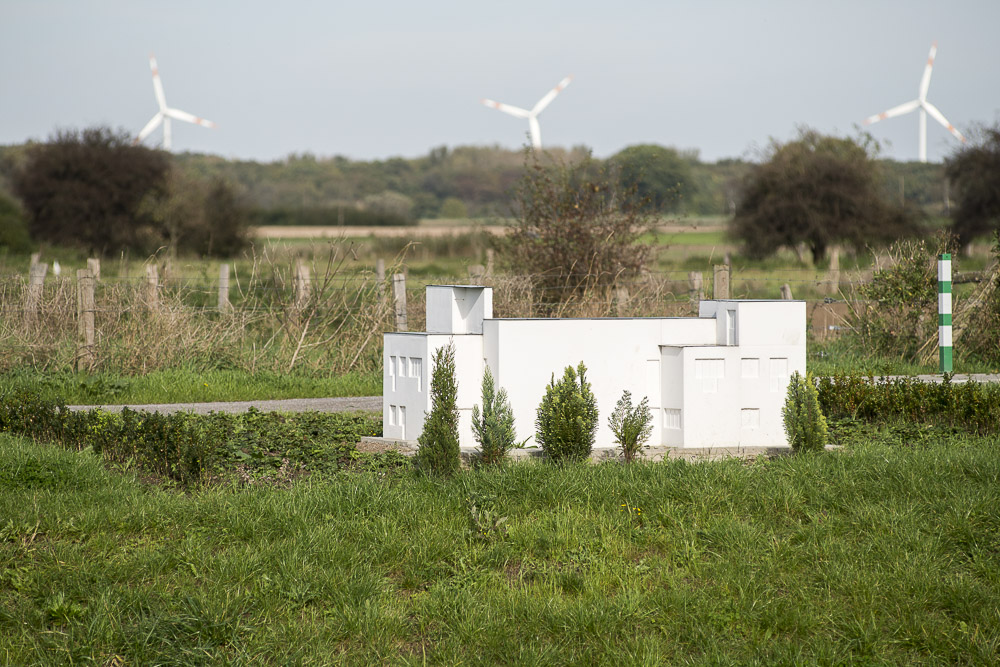
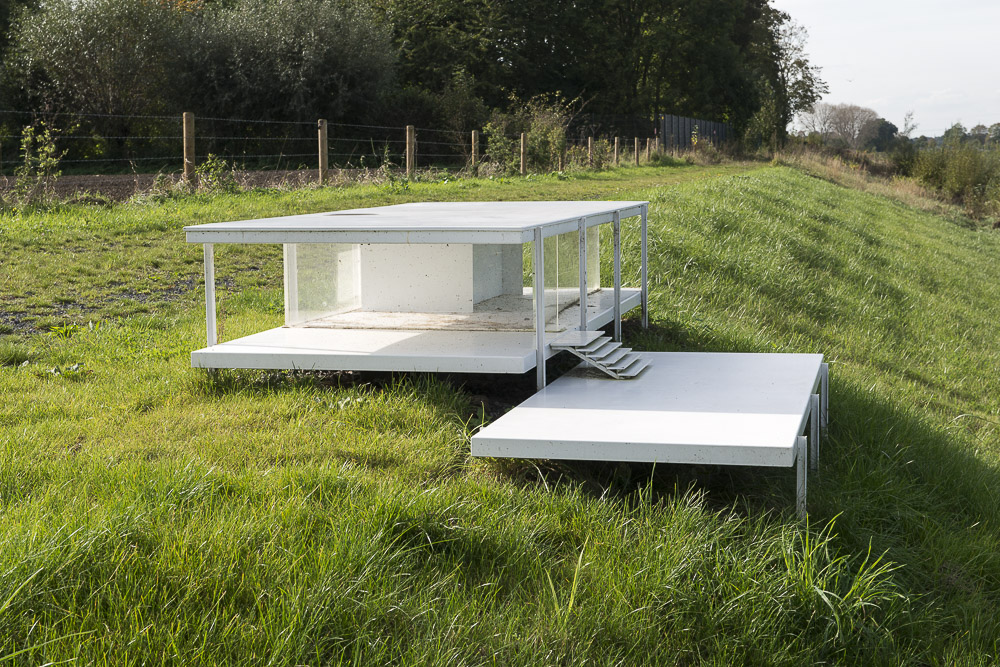
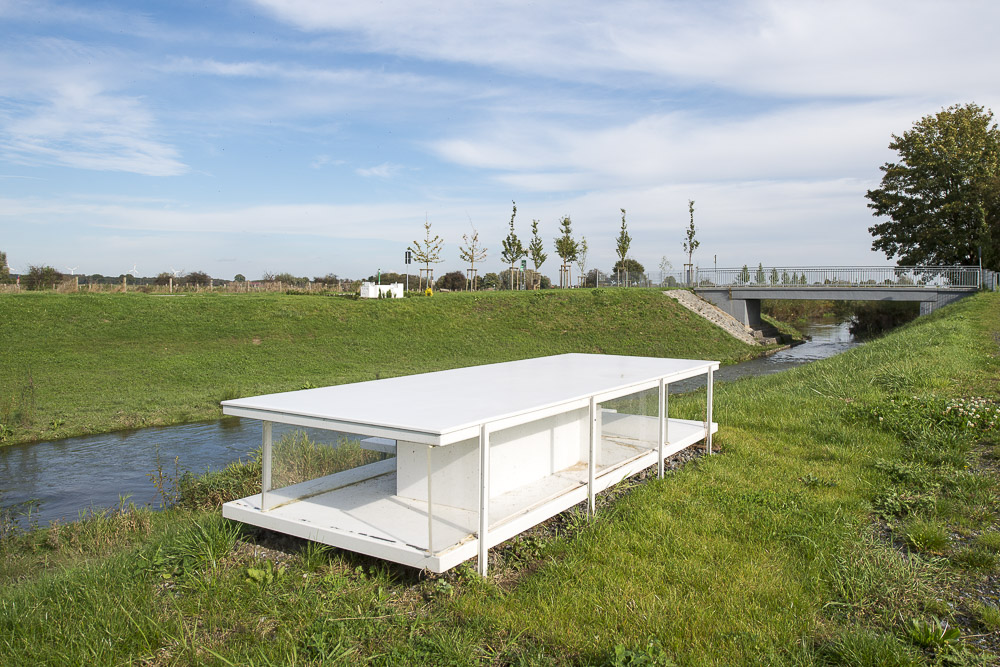
For their multi-part project, the artist duo chose a section of the Seseke that had just been renatured. The simultaneously natural and artificial riverbed was newly dug out, with the riverbanks and bike path freshly laid beside it. In this location, the artists added several small construction sites, each with a house that was built on a 1:10 scale. They are “dream houses” in different 20th century styles, subjectively chosen, but consistently representative of the architecture of villas or one-family houses.
More specifically, there is a Bauhaus-style master house by Walter Gropius (1926, Dessau), a model of Mies van der Rohe’s Farnsworth House (1951, Illinois) in the style of American post-war modernism, and a single-family home from the company Weberhaus’s current prefabricated house program.
The models of these buildings were constructed with steel and glass elements. With their overall layout and location, they embody the ideals of the sort of privileged lifestyle that often goes hand in hand with waterfront property. Because of the shift in scale, the narrow body of water looks like a wide river; there is plenty of space between the houses built on its banks, which are surrounded by expansive greenery. Nevertheless, the fragility of these idealized dwellings remains clear: being that the houses are small and bright white, the rainfall suggested by the work’s title or flooding from the nearby Seseke could damage their flawless appearance.
In this way, the multi-part sculpture not only depicts our ideal notions of how to live with gentle irony, but also includes a warning about the dangers of such ideals in the face of impending natural disasters and climate change.
References:
www.ueberwassergehen.de/kunstwerke/here-comes-the-rain-again/
www.koebberlingkaltwasser.de/works.html
Folke Köbberling
← Zur Startseite
Kamen, banks of the Seseke, Heerener Straße
